Extreme Heat Adds to the Health Challenges of Unhoused People in California's Inland Empire
The story was co-published with Black Voice News as part of the 2024 Ethnic Media Collaborative, Healing California.
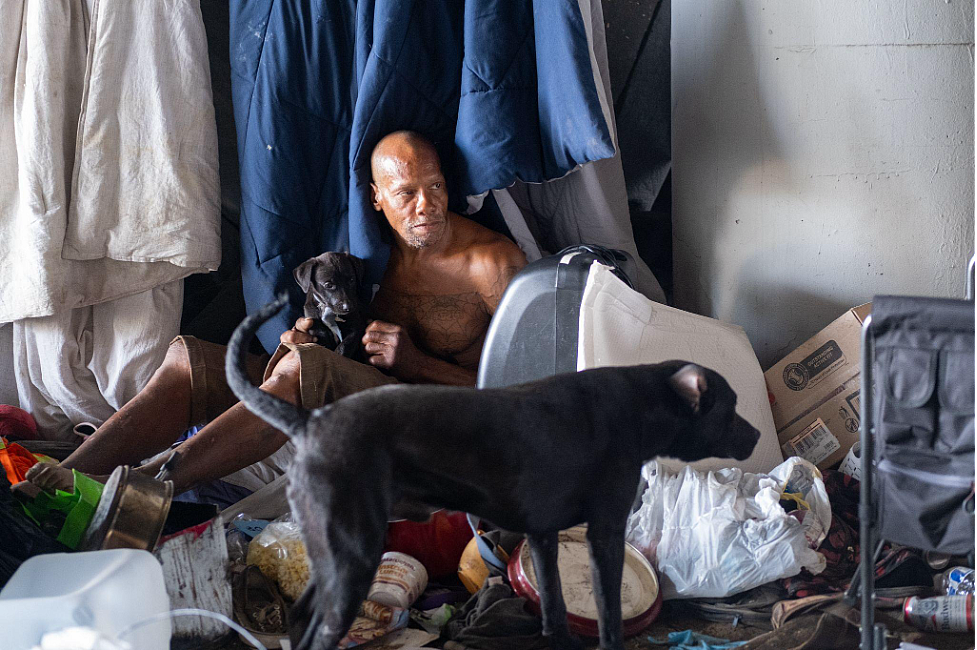
Redbone sits in his encampment which is situated under a bridge and next to a railroad track in Riverside on July 11, 2024.
Aryana Noroozi for Black Voice News/ CatchLight Local
Throughout the summer, record breaking heat has gripped Southern California. In July, multiple excessive heat warnings were issued across Riverside and San Bernardino Counties. Temperatures in the Coachella Valley reached 124 degrees on July 4. This was the highest temperature reached since record keeping began in 1893.
The impact of heat affects residents of these regions differently based on economic status. Not only are some parts of both counties hotter than others, but across a region known for its large logistics workforce and growing homeless population, heat is especially dangerous to health.
Outdoor workers and unhoused individuals are at risk of heat-related illness because they are often exposed to heat more than others. Unlike some outdoor workers who have access to water or a vehicle with air conditioning, unhoused people rarely have a break from the heat.
Unhoused populations face a unique and potentially fatal set of consequences when it comes to extreme heat. A homeless individual’s needs are focused on securing basic survival conditions from a safe place to rest, access to food and clean water, and managing health conditions. When extreme weather is added to the mix, it affects each of these needs and adds another layer of difficulty, placing their well-being at high risk.
“I manage to just deal with it,” said Redbone, a 54-year-old individual who has lived on the streets for the past 13 years. Redbone asked to be identified by his nickname. “Adapt, survive and get ahead, because doing the same thing over and over again [is] not working.”
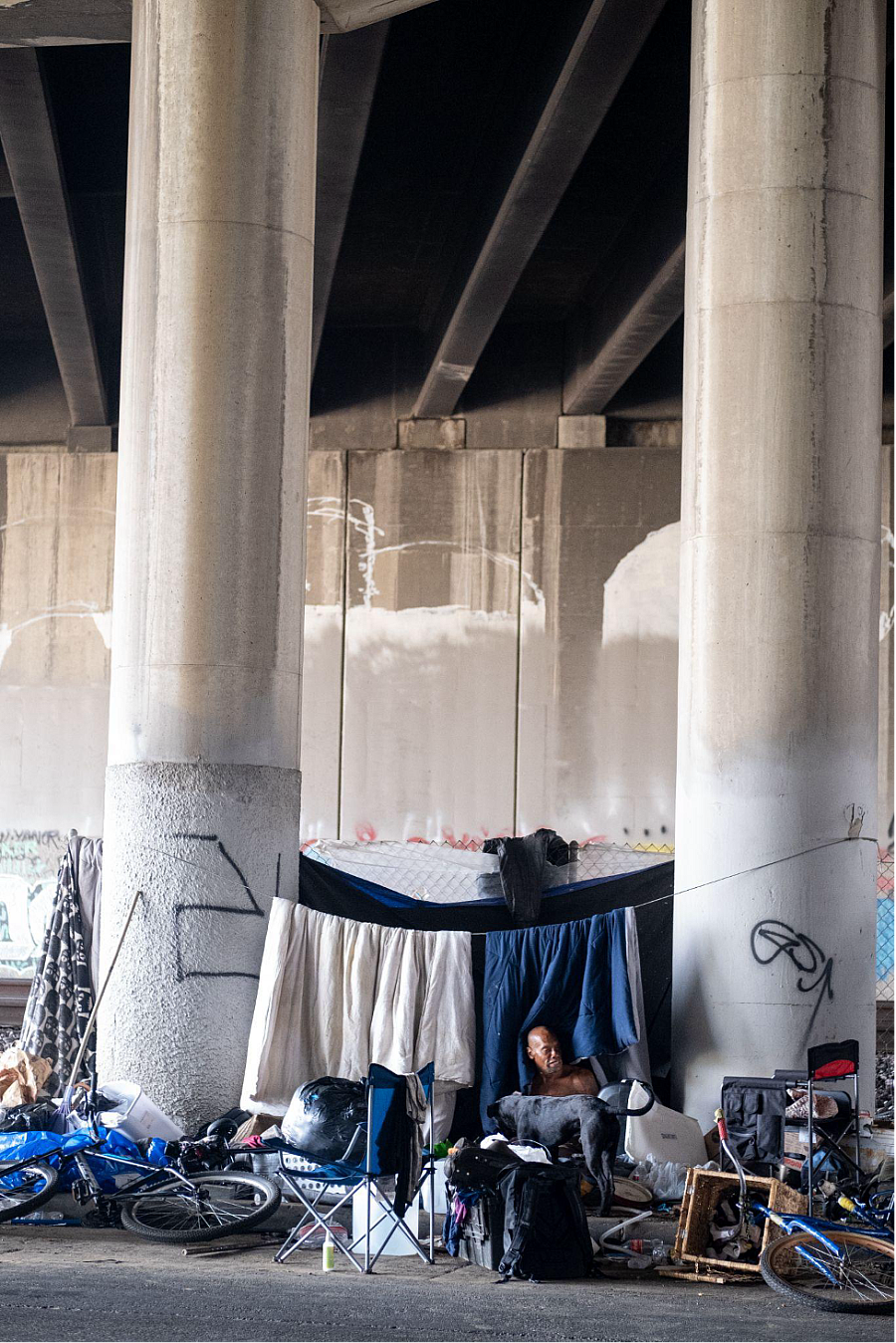
Redbone sits in his encampment which is situated under a bridge and next to a railroad track in Riverside on July 11, 2024.
Aryana Noroozi for Black Voice News/ CatchLight Local
Redbone said that it is important for an unsheltered person to know when to fight the wind and the sun.
“[Being under] a bridge is all day shade,” Redbone advised. “That’s the best thing you can do.”
“It’s gonna be harder each time, not easier,” he said about surviving the region’s rising temperatures.
According to the World Meteorological Organization (WMO), climate change is creating an increase in the intensity and frequency of heatwaves. The WMO states that climate change is caused by heat-trapping greenhouse gasses emitted from human activities, while air pollution occurs and fluctuates in a period of days to weeks and tends to be more localized.
The chemicals responsible for both climate change and air pollution are often emitted by the same sources and shifts in one can affect the other. The Inland Empire is home to some of the nation’s poorest air quality, placing the region’s unsheltered population at even greater risk.
Heat Exacerbates Physical and Mental Health Concerns
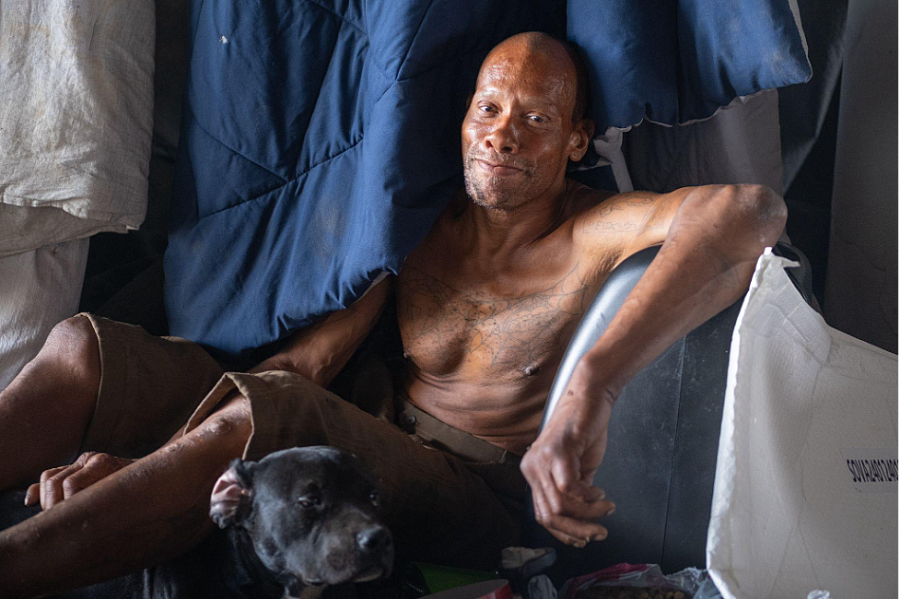
Redbone poses for a portrait beside his dog in his encampment in Riverside on July 11, 2024.
Aryana Noroozi for Black Voice News/ CatchLight Local
Redbone is one of more than 2,441 people who are homeless in Riverside County, according to its most recent Point-in-Time survey of unhoused people.
He receives care from the Riverside Healthcare in Action street medicine team, an organization of healthcare professionals, community health workers and social workers who provide medical care to unhoused individuals across California. While their care helps Redbone manage his health and attend to issues such as chronic joint pain, the heat brings daily complications and potential dangers for Redbone and other unhoused people that are challenging for them to manage
“They’re too busy trying to find shade, trying to find water, trying to do things to mitigate the heat exhaustion, which is already limited because they have nowhere to be,” said Redbone’s healthcare provider, Anthony Cerafice, a physician assistant.
“Not only is that baseline affected, like [for those] who are generally healthy, but they have co-morbid conditions that are now being exacerbated tenfold, because they are being left in that extreme environment without any support.”
Cerafice was concerned at how this population would remember to take their medications or practice health measures intended to mitigate impacts of the heat. He explained how the heat can make things “significantly worse” because this population can lack the awareness or ability to properly cool themselves let alone manage pre-existing health conditions when it comes to surviving extreme heat.
According to California Policy Lab’s 2019 Health Conditions Among Unsheltered Adults in the U.S. report, which surveyed homeless populations from California and 14 additional states, health can be a major factor in contributing to the loss of housing. This population reported even higher rates of physical and mental health conditions while on the street, with 50% reporting that they suffered from all three conditions concurrently, which was 25 times as likely as the surveyed sheltered population.
The Statista Research Department shared a study by the Benioff Homelessness and Housing Initiative about homeless adults in California with chronic health conditions that found that around 30% reported suffering from high blood pressure, 25% reported asthma, chronic bronchitis, emphysema and COPD, 15% percent reported heart problems and 11% had diabetes.
Homelessness, Excessive Heat and Increased Morbidity
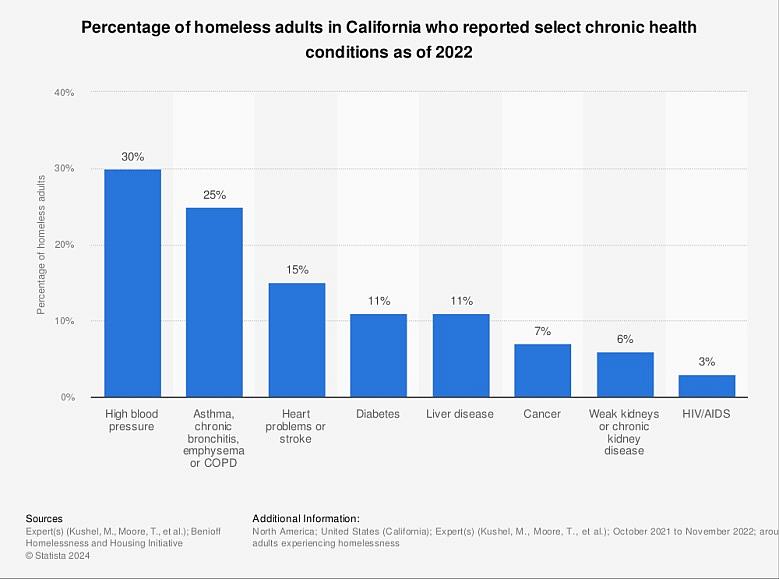
Find more statistics at Statista
“In the spring and the fall, when the weather in California is great, [unsheltered people] can make it outside. Your baselines are way more tolerable,” Cerafice explained. But weather conditions in the winter and in the summer are more difficult for homeless individuals to endure. “People cannot handle it.”
According to data from the Centers for Disease Control and Prevention (CDC), heat was the underlying or contributing cause in about 1,670 deaths nationwide in 2022 – a rate of about five deaths per million residents. This rate marked the highest heat-related death rate in over twenty years. Riverside County had a hospitalization rate nearly 75% higher than the state of California as a whole.
Excessive heat compounds this population’s health issues leading to complications that can be incredibly fatal. According to the World Health Organization, under extreme heat the body’s inability to regulate internal temperature and eliminate heat increases the risk of heat exhaustion and heatstroke.
As the body attempts to cool itself it also places stress on the heart and kidneys. This directly worsens health risks from chronic conditions such as cardiovascular, mental, respiratory and diabetes-related conditions, and can cause acute kidney injury. Cerafice shared that many patients he treats on the streets have these conditions occurring co-morbidly.
The CDC reported that obesity, dehydration, alcohol and drug use, heart disease, mental illness, poor circulation and sunburn are factors that can increase risks for heat related-illness. Heat-related illness includes heat exhaustion, which presents with the symptoms of heavy sweating and a rapid pulse; as well as heat stroke, a potentially fatal condition which can result in confusion, fever or even a loss of consciousness.
Extreme heat paired with illicit drug use and mental health conditions, together or separately, are also extremely dangerous, if not deadly, conditions for the homeless. Schizophrenia, for example, can deeply hinder an individual’s ability to both regulate body temperature and recognize the warning signs of heat related illnesses.
Methamphetamine usage also poses higher risks for heat related illness and death by raising body temperatures. A state-wide study conducted between 2021 and 2022 by the University of California, San Francisco (UCSF) found that one third of the surveyed homeless population reported daily methamphetamine usage.
As the heat and its added difficulty for survival compounds, the mental strain can lead to additional drug use.
“If you come from a pattern of substance or alcohol use, you’re going to fall back on those patterns to get out of discomfort, even if it’s just for a little bit to help you tolerate a really tough situation,” Cerafice explained.
With the region’s rising temperatures and heat-related hospitalizations, the unhoused population across the Inland Empire has few options beyond finding shade or access to cooling centers. For those who have the ability to learn of and access resources, these are usually short-term solutions available to help them mitigate the impacts of excessive heat.
A list provided by Riverside County provides addresses for 61 Community Action Partnership Cool Centers throughout the county. Cool centers are available to county residents who seek refuge from extreme heat and include public spaces such as libraries and community centers.
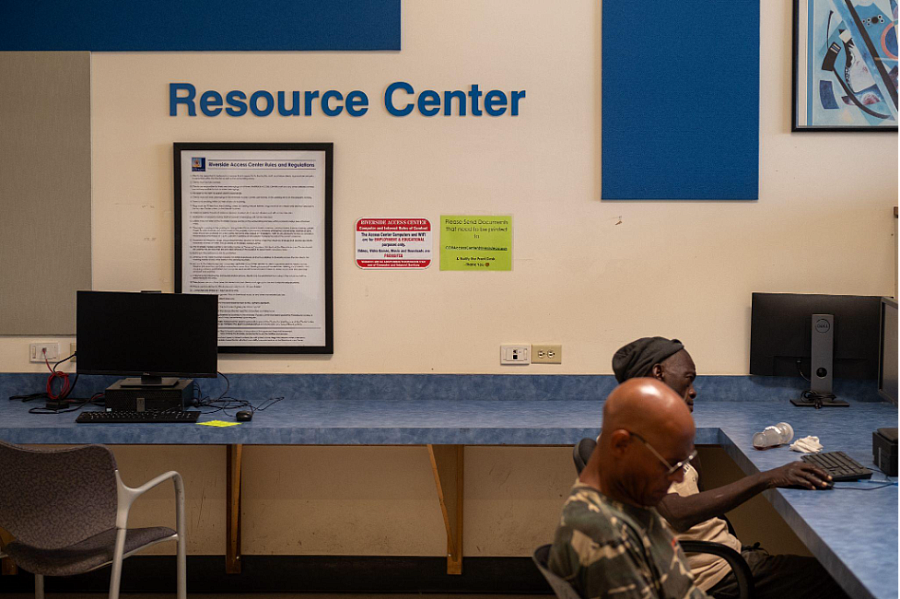
People utilize computers in a Riverside cooling center on July 11, 2024. Cooling centers offer a space for the community to seek relief from extreme heat but there can be barriers to accessing these spaces for the unhoused population.
Aryana Noroozi for Black Voice News/ CatchLight Local
“I think Riverside does a pretty good job of offering cooling centers. But that’s still information. Knowledge is power,” Cerafice said. “[But,] how do you get that [information] to people who don’t have access to any of those things? It only makes it that much more difficult for anyone who’s in a position where they don’t have a phone, they don’t contact the outside world, and they’re stuck in the heat.”
Claire Jefferson-Glipa, Executive Director of Family Promise of Riverside, an organization that helps homeless families with case management and housing also discussed the limitation of accessing these centers. She described Fourth of July when public spaces are closed and the bus system does not run. She also explained that other people utilize these spaces, which are often libraries or community centers, and lent the example of an elderly woman who perceives the threat of a homeless person entering the building.
“[It’s] because of the way that our society frames our unhoused community, oftentimes, people immediately assume that when someone is unkept, that they are also unsafe to be near,” Jefferson-Glipa said. “There’s a real struggle and a challenge for our unhoused neighbors to not only utilize cooling centers, but also to feel welcome there and to have access to resources.”
While across the state these centers provide a safe cooling space to those with access and awareness, the state is simultaneously cutting funding for these spaces.
Last month, Gov. Gavin Newsom signed a budget which discounted $107.8 million in funding for programs and projects that address extreme heat, including cooling centers and other community measures to combat heat such as shade creation, heat action plans as well as public outreach and education. The Senate and the Assembly passed competing measures, lacking Newsom’s endorsement, to be voted on in the November election which includes a bond to pay for climate programs.
“It’s really hard to say [a specific] policy would be really helpful. There are tons of small things that municipalities and counties could do, versus things like making water available and making bathroom use available,” said Jefferson-Glipa.“But in a climate where ultimately, our desire is to not see our unhoused community and to truly wipe the problem from our eyes versus actually addressing the challenge that is only an extension of what we are all facing.”
With temperatures projected to rise for the remaining months of summer and even into the fall, the region’s homeless population will continue to face this additional layer of complexity when it comes to survival.
“It’s the odds against the elements,” Redbone said, explaining what he wishes others would know about this experience. “Just be elemental.”
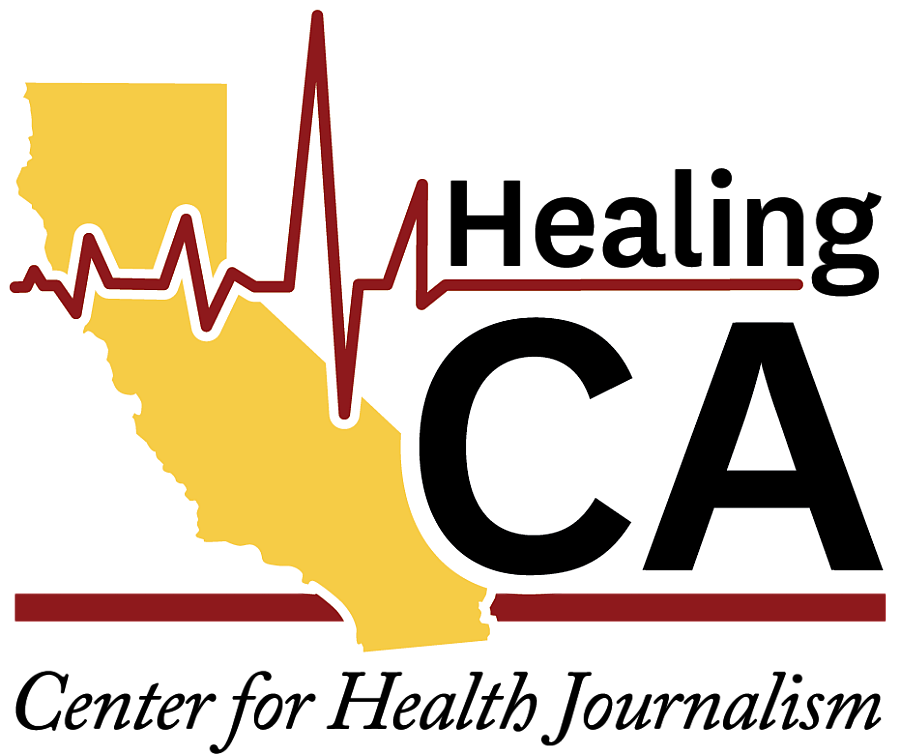
This Black Voice News project is supported by the USC Annenberg Center for Health Journalism, and is part of “Healing California,” a yearlong reporting Ethnic Media Collaborative venture with print, online and broadcast outlets across California.
